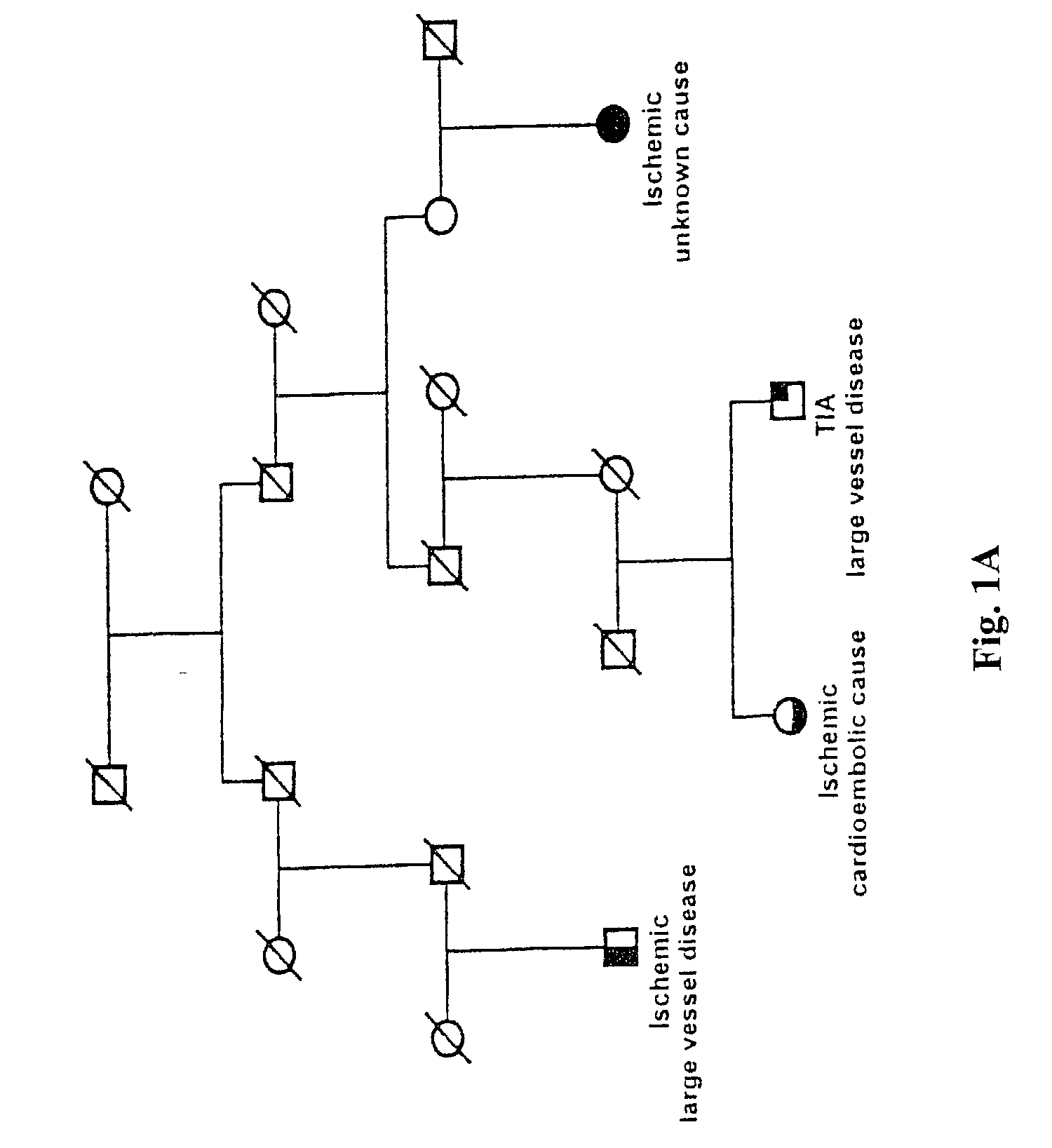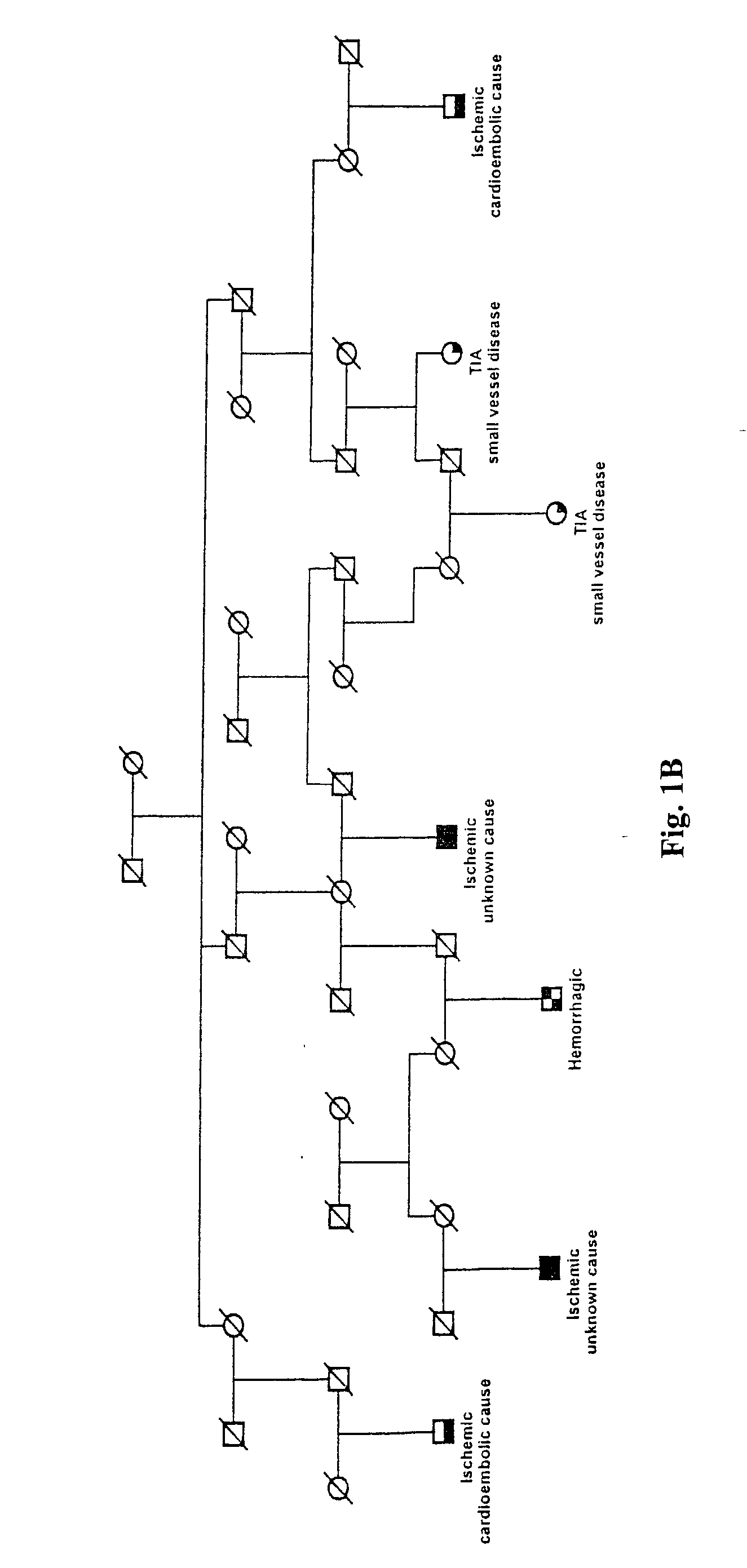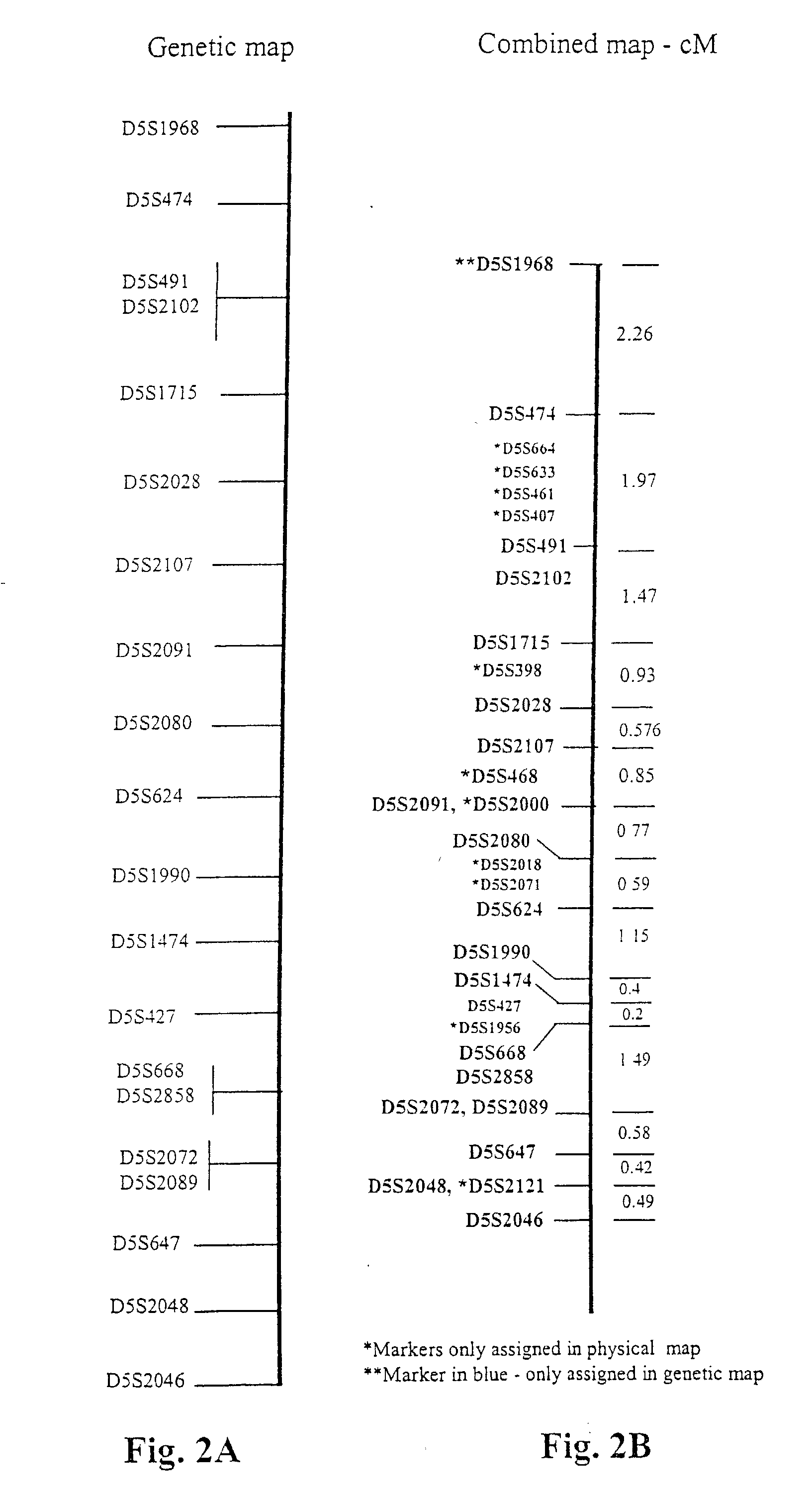Human stroke gene
a human stroke and gene technology, applied in the field of human stroke gene, can solve problems such as the generation of a truncated polypeptid
- Summary
- Abstract
- Description
- Claims
- Application Information
AI Technical Summary
Benefits of technology
Problems solved by technology
Method used
Image
Examples
example 1
Identification of the PDE4D Gene with Linkage to Stroke
[0155] Icelandic Stroke Patients and Phenotype Characterization
[0156] A population-based list containing 2543 Icelandic stroke patients, diagnosed from 1993 through 1997, was derived from two major hospitals in Iceland and the Icelandic Heart Association (the study was approved by the Icelandic Data Protection Commission of Iceland and the National Bioethics Committee). Patients with hemorrhagic stroke represented 6% of all patients (patients with the Icelandic type of hereditary cerebral hemorrhage with amyloidosis and patients with subarachnoid hemorrhage were excluded). Ischemic stroke accounted for 67% of the total patients and TIAs 27%. The distribution of stroke suptypes in this study is similar to that reported in other Caucasian populations (Mohr, J. P., et al., Neurology, 28:754-762 (1978); L. R. Caplan, In Stroke, A Clinical Approach (Butterworth-Heinemann, Stoneham, Mass., ed 3, (1993)).
[0157] The list of approximatel...
example 2
Identification of the PDE4D Gene
[0189] Sequence of the Candidate Region
[0190] We have sequenced approximately 3 Mb of the area defined by one drop in lod (FIG. 3, the genetic map of the region). The BAC (bacterial artificial clones) sequenced in house are shown in Table 7A. We also used for the assembly the following publicly available BAC sequences from GenBank listed in Table 7B for the assembly. The BAC clones we sequenced are from the RCPI-11 Human BAC library (Pieter dejong, Roswell Park). The vector used was pBACe3.6. The clones were picked into a 94 well microtiter plate containing LB / chloramphenicol (25 .mu.g / ml) / glycerol (7.5%) and stored at -80.degree. C. after a single colony has been positively identified through sequencing. The clones can then be streaked out on a LB agar plate with the appropriate antibiotic, chloramphenicol (25 .mu.g / ml) / sucrose (5%).
10 TABLE 7A Sequenced at Decode (BAC name) Comment Accession number RP11-621C19 1 AC020733 RP11-113C1 2 RP11-412M9 2 RP...
PUM
| Property | Measurement | Unit |
|---|---|---|
| volume | aaaaa | aaaaa |
| frequency | aaaaa | aaaaa |
| nucleic acid | aaaaa | aaaaa |
Abstract
Description
Claims
Application Information
 Login to View More
Login to View More - R&D
- Intellectual Property
- Life Sciences
- Materials
- Tech Scout
- Unparalleled Data Quality
- Higher Quality Content
- 60% Fewer Hallucinations
Browse by: Latest US Patents, China's latest patents, Technical Efficacy Thesaurus, Application Domain, Technology Topic, Popular Technical Reports.
© 2025 PatSnap. All rights reserved.Legal|Privacy policy|Modern Slavery Act Transparency Statement|Sitemap|About US| Contact US: help@patsnap.com



